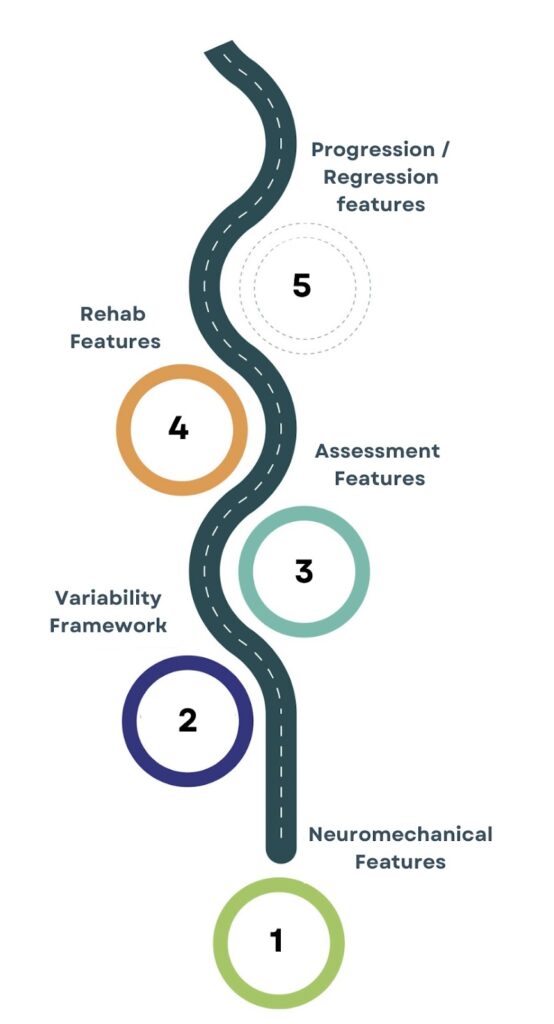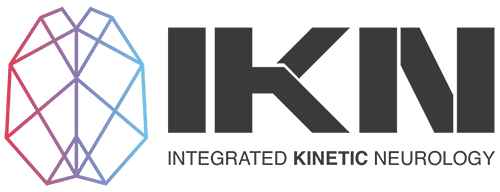
How Do Neuromechanical Features Guide Our Framework?
This blog is the first part of a 5 part series to give you a better understanding of our overall assessment & rehabilitation process. Our approach is not just a series of techniques, but a process of appreciating key features across our movement system, and understanding how these can guide our assessment & rehabilitation process.
Part 1 is all about appreciating the interactions between the nervous system, our anatomy/mechanics, and the environment!
Here we go..
Our movement system has distinct neuromechanical features that 
Within our assessment & rehabilitation approach, we use these neuromechanical features to guide our general thought process when trying to make sense of the strategies an individual is using to manage forces. Appreciating these features does not guide specific rehabilitation strategies, but it provides us with a basic blueprint to better understand if the individual we’re working with has access to these fundamental features.
These features fall into three categories:
- Neurological
- How does the nervous system distribute control across the anatomy to manage forces from the external environment?
- Mechanical / anatomical
- How is our anatomy designed to assist our ability to manage & distribute forces efficiently?
- Environmental
- How do external forces/perturbations from the external environment influence our system and how can we appreciate these to guide rehab?
Neurological Features
The control strategies that our nervous system distributes across our anatomy is highly dictated by the architectural components of our anatomy. For example, the architectural arrangement of the gluteal muscles and the gastrocnemius/soleus complex are very different, and so doesn’t it make sense that the nervous system will express different control strategies across these muscular tissues?
Our nervous system gathers sensory information from our anatomy and the environment to determine how to control our anatomy, which occurs mainly through changes in muscle activity. But, while this sensory feedback – biased control strategy makes sense when we’re moving in very predictable & unperturbed environments, it doesn’t paint the full picture when we’re moving in unpredictable & perturbed environments. This is secondary to the delay in sensory feedback, i.e, it takes time for sensory information to travel back to the nervous system, for the nervous system to process it, and then generate appropriate muscle activity to handle whatever the environment is throwing at it, at that period of time.
In addition to this feedback – biased strategy, the nervous system has the capacity to predict the impact of forces (before forces actually hit us) on our system & can change muscle activity in anticipation of forces (feedforward control), and it does this largely based on an internal model of our anatomy (i.e., it needs to have a refined map of our body & environment, which it gathers through sensory information, to make good predictions).
To simplify the understanding of how the nervous system controls our anatomy, we can categorize these control strategies into:
Top-down & bottom-up control:
These are general descriptions of the two basic control strategies our nervous system uses:
Top-down control refers to the ability of the nervous system to use sensory feedback from the anatomy & environment to guide how it will control the anatomy. Top-down control is more dominant in submaximal situations, where the nervous system has TIME to gather sensory feedback, but this form of control will break down when moving in more complex situations where there’s lots of unpredictable forces/perturbations impacting our system. People experiencing persistent pain and/or movement limitations often rely too much on top-down control, where they are micromanaging their movement too much, and now allowing the intrinsic features of the anatomy to assist how we control forces.
Bottom-up control refers to the ability of the nervous system to “offload” control into the anatomy (known as central mechanical flexibility). This doesn’t mean that the nervous system isn’t gathering sensory feedback, it just means that it has greater trust in the features of our anatomy (which we’ll describe below) to assist the process of managing forces. This type of control is often reflected through movement that is more fluid, less jerky, and more subconscious in nature. Top-down control can be both conscious & subconscious in nature. Both control processes are important at different stages of the rehabilitation process.
Key point: these are simply representations of how our nervous system can change its behavior under different contexts. In reality, we will use the muscles & joints to guide our thought process, but we are describing the neurological features briefly here to help you understand what features have led to the creation of our variability framework. They do not need to be fully understood to fully utilize our assessment & rehab framework.
Mechanical / Anatomical features
These features can be further categorized into muscular & joint features for greater simplicity.
Muscular features:
Mass distribution: most of our muscle mass is distributed proximally, and this facilitates a greater capacity to produce high force in a proximal to distal manner. Less muscle mass distributed distally reduces the inertia of the distal tissues, and this allows them to be much more responsive to external forces & perturbations, i.e., they can deal with forces faster (unless those forces are larger and need to be managed by the proximal tissues).
Biarticular vs monoarticular muscle behavior: the presence of long biarticular muscle in the limbs (where there is less segmentation) facilitates a greater capacity to share forces between joints. These muscles are typically shorter-fibered with greater amounts of tendinous tissue, which supports their ability to operate isometrically to manage forces in complex environments. Monoarticular muscles typically bias a force production (lengthening & shortening) role in complex environments.
Joint features
Complex to simple distribution: joint/segmental interactions proximally express increased complexity. This is highlighted by the small distance between spinal vertebrae as well as the sheer number of segmental interactions across the midline region. As we move distally into the limbs, the interactions are much more simple, highlighted by the large distance between joints (e.g., hip to knee & knee to ankle). As a result, we have bones with less segmentation (e.g., femur, humerus etc). Lastly, as we move into the hands & feet, we see greater levels of complexity again in segmental structure. This complex to simple to complex distribution (from proximal to distal) allows for a system that can both be more controllable & express high levels of variability when managing unpredictable perturbations.
Intersegmental behavior: segments have the capacity to move independent of their neighboring segment, and this increases the “space” that the joint has to share forces locally. It also increases the variability of muscular tissues locally, because increased joint space increases the lengthening & shortening potential of muscular tissue. From a coordinative perspective, the capacity of segments to dissociate (moving relatively or in opposite directions) is VERY important to consider, and we use this coordinative feature to assess muscular & joint variability. It will also serve as a guide for our loading progressions & regressions too.
Environmental features
External force behavior: External forces/perturbations/disturbances generally impact the distal part of our anatomy first, because they directly interact with the external environment. This is why we put a large emphasis on working towards building greater capacities through the hands & feet to manage those forces
Distal to proximal load/force distribution: this is highlighted by an understanding that the distal parts of our anatomy directly interact with the environment. As a result, we manage load/perturbations/disturbances in a distal to proximal manner.
Proximal to distal force production: this is highlighted largely by the greater distribution of mass proximally, and when we can sequence force production from proximal to distal, it increases the acceleration of the distal segment (e.g., hip > knee > ankle/foot & trunk > shoulder > elbow > wrist/hand).
Assessment/rehab insight: When working with people experiencing pain, we need to integrate these neuromechanical features outlined above with the unique limitations that the individual presents with. Every individual we work with will have unique biopsychosocial contributing factors. But, they will all express similar neuromechanical features. These neuromechanical features will form the basic framework that we will use to guide rehabilitation, but it needs to be flexible in order to modify interventions based on the client’s unique subjective & objective findings.
If you made it this far, congratulations! Hopefully, this helps to simplify a lot of the complexity you might see in neuroscience & biomechanical textbooks!
As stated above, these three features are general representations of how our nervous system, anatomy, and the environment interact. As humans, we all possess these features. They do not need to be fully understood to use our IKN assessment & rehab approach, but understanding them can offer us a clearer insight into why our system is designed the way it is, and help us use these features as a basic blueprint to guide our general thought process.
